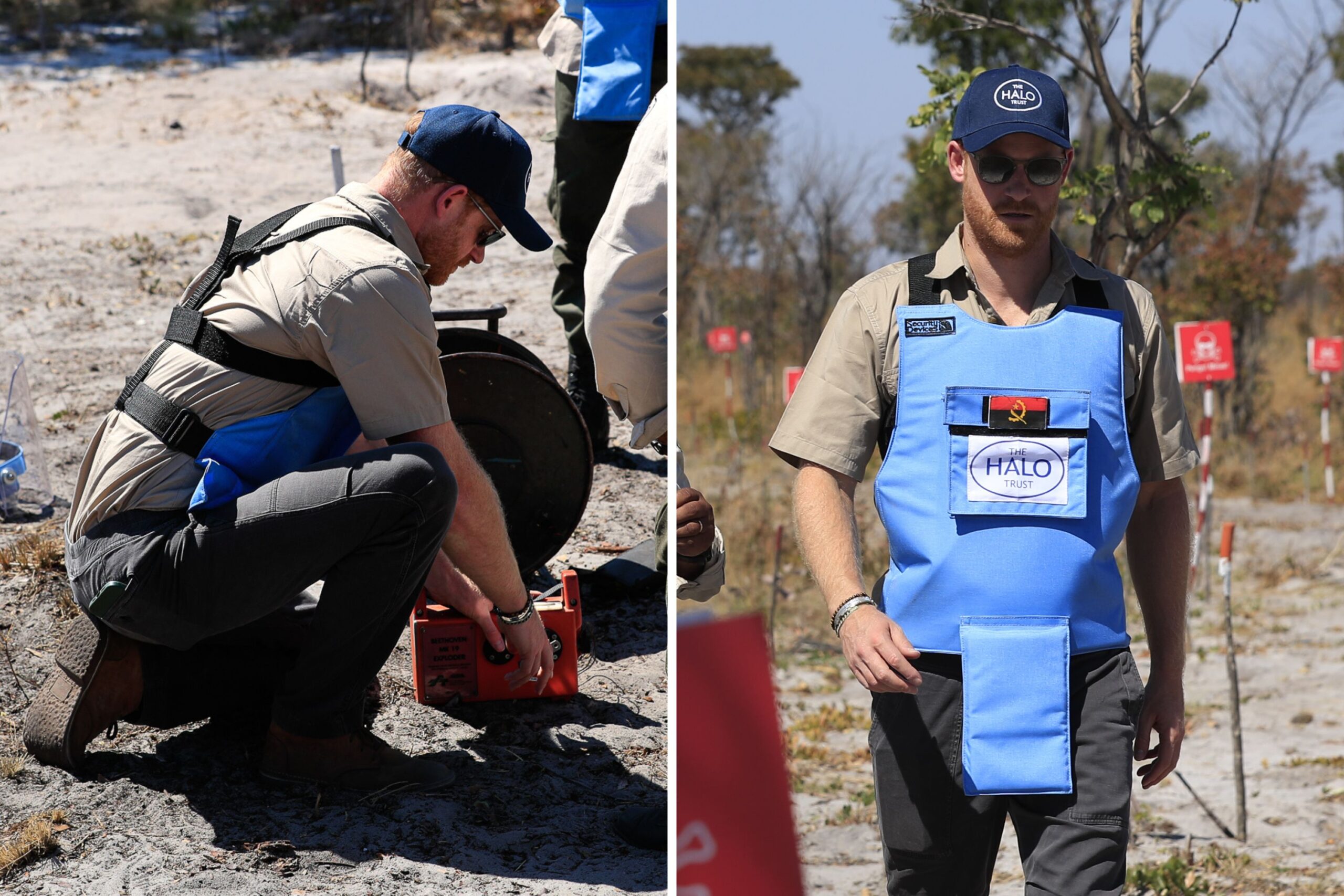
Prince Harry has spoken out for at-risk children—just like his late mother did—in a visit to a remote village near Africa’s biggest landmine field.
Princess Diana famously walked a landmine field in Angola in support of the work of The Halo Trust, and the prince followed in her footsteps on Wednesday in support of the same British charity.
The Halo Trust
Why It Matters
It comes at a time of renewed energy in the Sussex camp after Harry and Meghan brought in a new PR team in 2025.
The prince has communicated his commitment to Britain with a U.K.-based press officer being tasked to navigate his relationship with the country’s press.
Prince Harry’s Angola Visit
Prince Harry paid powerful tribute to Princess Diana on Wednesday by returning to the area where she famously walked in 1997 to raise awareness about landmines.
The area is still littered with deadly explosives from Angola’s 27-year civil war, which ended in 2002.
“Children should never have to live in fear of playing outside or walking to school,” Harry said in a press release. “Here in Angola… the remnants of war still threaten lives every day.”
“The Angolan government’s continued commitment is a powerful testament to Halo’s success in saving lives and reducing humanitarian risk.”
Prince Harry thanked Angolan President João Lourenço for his “leadership and partnership, as well as continued donor support as we work together towards completing the mission of a landmine-free country.”
The Duke of Sussex visited Cuito Cuanavale, home to Africa’s largest remaining minefield, to promote the Halo Trust’s ongoing mission to make Angola mine-free.
Speaking in Portuguese, Harry warned local children to “stop, go back and tell your elders,” in an effort to raise awareness of the danger of crossing into the minefield past skull and crossbones signs.
Princess Diana’s 1997 Visit
In January 1997, Princess Diana made a historic visit to Angola to highlight the devastating impact of landmines, bringing global attention to a humanitarian crisis that had generated little international attention.
Her trip took her to Huambo, a town ravaged by civil war, where she met landmine survivors, including children who had lost limbs, and spoke passionately about the need for a global ban on anti-personnel mines.
The powerful image of her walking through a cleared lane in an active minefield, wearing body armor and a visor, became a symbol of her commitment to humanitarian causes.
Improving Royal Relations?
Harry was rocked in May by the loss of a lawsuit he filed against the British Government in an effort to get his police protection team restored on visits to the U.K.
He said after the case that he wanted a “reconciliation” with his father – but told the BBC the King “won’t speak to me”.
Sine then, Prince Harry has brought in a new team including Liam Maguire, who has been tasked with running the U.K. end of his PR operation.
And there are already signs of a change in strategy after Maguire and U.S. based Sussex comms chief Meredith Maines met King Charles III‘s director of communications, Tobyn Andreae, in London last week.
The informal summit at private members club the Royal Overseas League sparked hopes relations between the two sides could improve in the coming months.
Jack Royston is chief royal correspondent for Newsweek, based in London. You can find him on Twitter at @jack_royston and read his stories on Newsweek‘s The Royals Facebook page.
Do you have a question about King Charles III, William and Kate, Meghan and Harry, or their family that you would like our experienced royal correspondents to answer? Email royals@newsweek.com. We’d love to hear from you.
